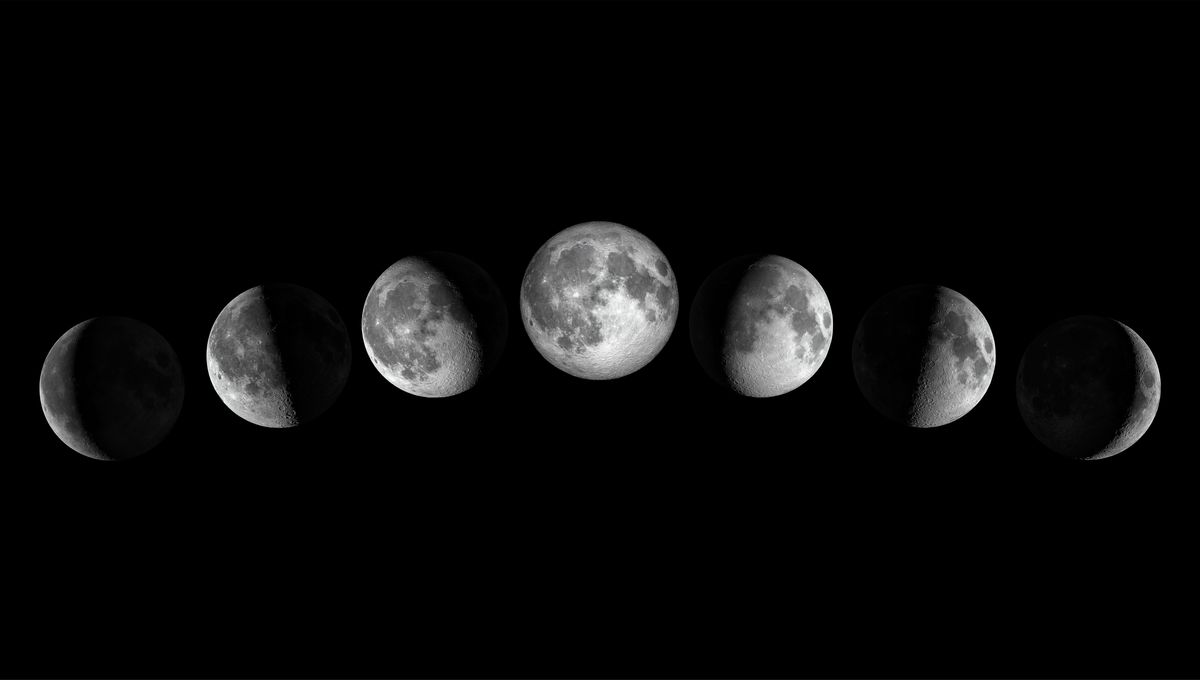
The idea that the menstrual cycle is synced with the phases of the Moon is a controversial one, and one that’s generally considered to have little scientific evidence to support it. A new study, however, has proposed that periods were once significantly linked up with the lunar cycle, but that the rise of light-emitting diodes (LEDs) has disrupted this connection.
We know – it sounds like yet another of those bonkers period myths. But there’s at least some argument to be made for investigating the possibility; the reproductive cycles of many animals appear to be synchronized with phases of the Moon, and humans are very much animals.
In the new study, researchers collected data from 176 women living in the Northern Hemisphere, all of whom were not using oral contraceptives, and had recorded the start of their period each month over a timeframe that ranged from two years at the lower end to 37 years at the longest. They then compared this with data on the Moon, including which phase of the lunar cycle it was in and when it was closest to Earth.
“The results showed that the menstrual cycles of women whose records were made before the introduction of light-emitting diodes in 2010 and the widespread use of smartphones were significantly synchronized with the cycle of the full and new moon,” said lead researcher Charlotte Helfrich-Förster in a statement.
The team also suggested that there was a link with the interacting gravitational forces of the Earth, Moon, and Sun too, as they found that, after 2010, menstrual cycles were most coupled to the Moon in January, when Earth is at perihelion – the point in its orbit when it’s closest to the Sun.
There’s one very important caveat to results, though. “Our findings show a correlation between these two phenomena. We were unable to establish a causal link,” said Helfrich-Förster. That leaves open the possibility that the relationship between the menstrual cycle, the Moon, and the rise of LED lights that the team saw in the data could just be a coincidence.
That’s not the only limitation of this study either. Like much of the research in this area, it’s let down by a small sample size; if there were a causal link here, you’d need the data of a lot more than 176 people to convince the rest of the scientific community.
The menstrual cycle data analyzed in the study was also self-reported, which means that it might not be entirely accurate – it’s pretty easy to forget to note down that your period’s started when you’re in the midst of cramps – and also doesn’t include information about other factors that might affect someone’s cycle, like aging or illness.
Most importantly for the proposed relationship between light pollution and our lack of synchrony with the Moon, there’s no data on the individuals’ light exposure over time.
“It would have been useful to be able to test this hypothesis using records of the light to which the participants in this study were exposed, in order to verify that the light intensity of the participants’ environment had actually changed before and after 2010,” neurobiologist Claude Gronfier told El País.
Gronfier wasn’t involved in the current study, but was part of research published last year that suggested that the menstrual cycle is driven by our body’s internal clock (know as the circadian rhythm).
“[I]t cannot be ruled out that this weaker association observed over the past 15 years may be partly related to other environmental factors (increased temperatures linked to global warming, CO2, diet, etc.) or individual factors (aging of the study participants, more sleep disorders, etc.),” he said.
As for the gravitational effect – well, it’s safe to say some experts aren’t convinced. University of Southern Queensland astrophysicist Professor Jonti Horner told ABC News that it “really doesn’t make sense”, as the variation in distance at perihelion is only small, and so we should see the effect in the months surrounding January too.
“We’re at a distance very similar to perihelion distance for a lot longer,” Horner said.
Even Helfrich-Förster acknowledges that there is more work to be done here. “It is completely unclear how such a lunar clock can be synchronized by the small cyclical changes in gravity between the Earth and the moon,” the researcher said.
To find out if there truly is a link between the menstrual cycle, the Moon, and light, would require a much more controlled experiment, and plenty of replication of that experiment. “To measure this accurately, you would have to put women in a bunker for a month,” María de los Ángeles Rol de Lama, director of the Chronobiology and Sleep Laboratory at the University of Murcia, who did not participate in the study, said to El País.
That’s not entirely out of the realm of possibility – some people have spent a long time in caves in pursuit of science – but we can’t say we’d be in a hurry to sign up for it.
The study is published in Science Advances.
Source Link: Does The Moon Affect The Menstrual Cycle? Yes, New Study Claims